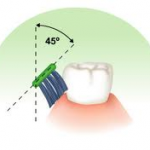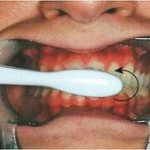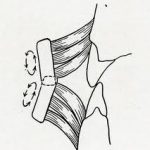MANIPULATING THE BRUSH
To cleanse the occlusal surfaces of teeth, the tips of the bristles should be worked into the pits and fissures with enough vibration to loosen and dislodge all debris.
To cleanse exposed axial surfaces, the sides of the bristles should be placed against the gingival tissues to avoid lacerating them with the bristle tips. Then, holding the sides of the bristles against the gingiva, rotate the bristles toward the occlusal or incisal surfaces. The bristle should be worked between teeth and into interproximal areas to dislodge accessible food debris and plaque. When the brush is used to stimulate or massage the gingiva, the sides of the bristles should be placed against gingival tissues near the bristle tips. With light pressure, the brush should be rotated slightly to flex the bristles against the gingiva, and a vibrating motion should be transmitted through the handle.
What Type of Toothbrush Should I Use?
Most dental professionals agree that a soft-bristled brush is best for removing plaque and debris from your teeth. Small-headed brushes are also preferable, since they can better reach all areas of the mouth, including hard-to-reach back teeth. For many, a powered toothbrush is a good alternative. It can do a better job of cleaning teeth, particularly for those who have difficulty brushing or who have limited manual dexterity.
MAJOR TOOTHBRUSHING METHODS
-
Bass  Method.
Importance
1) Most effective in cleaning cervical 1/3 & beneath gingival margins
2) Suitable for everyone – Periodontally healthy & periodontally disease
3) Periodontal maintenance
4) Cleanses sulcus (space between tooth and gums)
This method is useful for all types of dental conditions, especially periodontal problems. With bristles pointed at a 45-degree angle into the gingival sulcus, vibrate the brush gently back and forth about 20 times. Move the brush forward and repeat.
2. Rolling Stroke Method.
This method is useful for stimulation of the gingiva.
Place the brush above the free gingiva with the bristles pointed toward the apices.
Exerting light pressure, draw the brush toward the occlusal surface using a rolling
stroke. Use a scrub technique on the occlusal surface.
3. Charter’s  Method.
Importance
1) Efficiently cleans interproximal areas
2) Able to clean areas between fixed appliances (prosthetic and orthodontic) and gingival margins
3) Who should use this?
People with orthodontic and fixed prosthetic appliances
People who have just undergone periodontal surgery (temporary cleaning of surgical wounds)
This method is useful for patients with severe loss of interdental papilla height, fixed prosthetic appliances, previous gingival surgery, or subsided ulcerative gingivitis. Perform the rolling stroke first to remove debris from the teeth. Direct the bristle tips toward the occlusal or incisal surface. Gently rotate the handle, flexing the bristles and bringing them into contact with the interdental tissues and exposed proximal surfaces. Vibrate the handle of the brush with a slow, circular motion.
4. Modified Stillman’s Method.
Importance
1) Clean entire facial/ buccal and lingual surfaces
This method is useful for patients with hypersensitive gingiva or slightly reduced interdental papilla. Use the rolling stroke method while vibrating the bristles in a lateral motion.
5. Fone’s (Circular) Method.
Importance
1) An easy-to-learn first technique for young children
This method is useful for small children or others with poor manual dexterity. First, occlude the teeth. Then, lightly press the bristles against the posterior teeth and the gingiva. Revolve the brush head in a fast, circular motion, using circles of large diameter. Continue the circular motion, and slowly move the brush head toward the anterior until all facial surfaces have been brushed. With the mouth open, use the same circular motion on the maxillary and mandibular lingual surfaces.
6. FOR Children up to 9 years: Scrub technique advised ·
Importance
1) Most common method but has no benefits because it causes gingival recession
Normally the Scrubbing technique is advised for very young children · brush for at least 2 minutes · always use tooth brush with soft bristles and fluoridated, flavored toothpaste · a tooth brush with hard bristles can cause gum recession (i.e they will recede and move backward) and if used with an abrasive toothpaste, can cause tooth abrasion (loss of tooth substance)
7. STILLMAN’S METHOD
Importance
1) Provides gingival stimulation (vibratory motion)
2) Suitable for gingival recession (Toothbrush bristle ends not directed into sulcus)
3) Less traumatic to the gingiva
4) Who should use this?
People with continuous gingival recession
Direct bristles apically to sulcus at 45° to the long axis of the tooth.
Place bristles partly on the cervical part and on the gingiva.
Apply vibratory motion with slight pressure to stimulate gingiva.
Repeat for the lingual surface of the tooth.
Use short back-and-forth strokes on the occlusal surfaces gently.
Place toothbrush perpendicular to the tooth surface.



